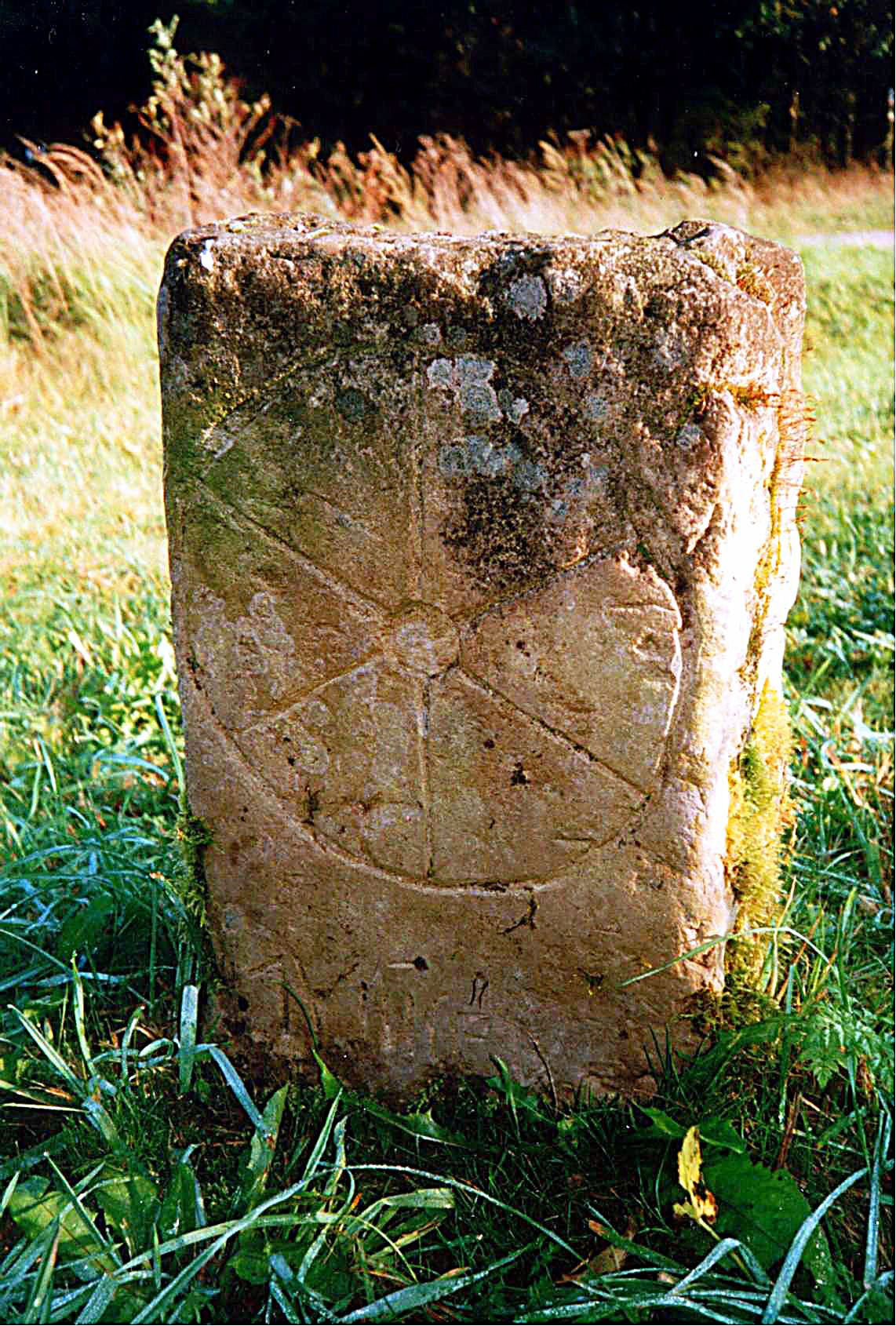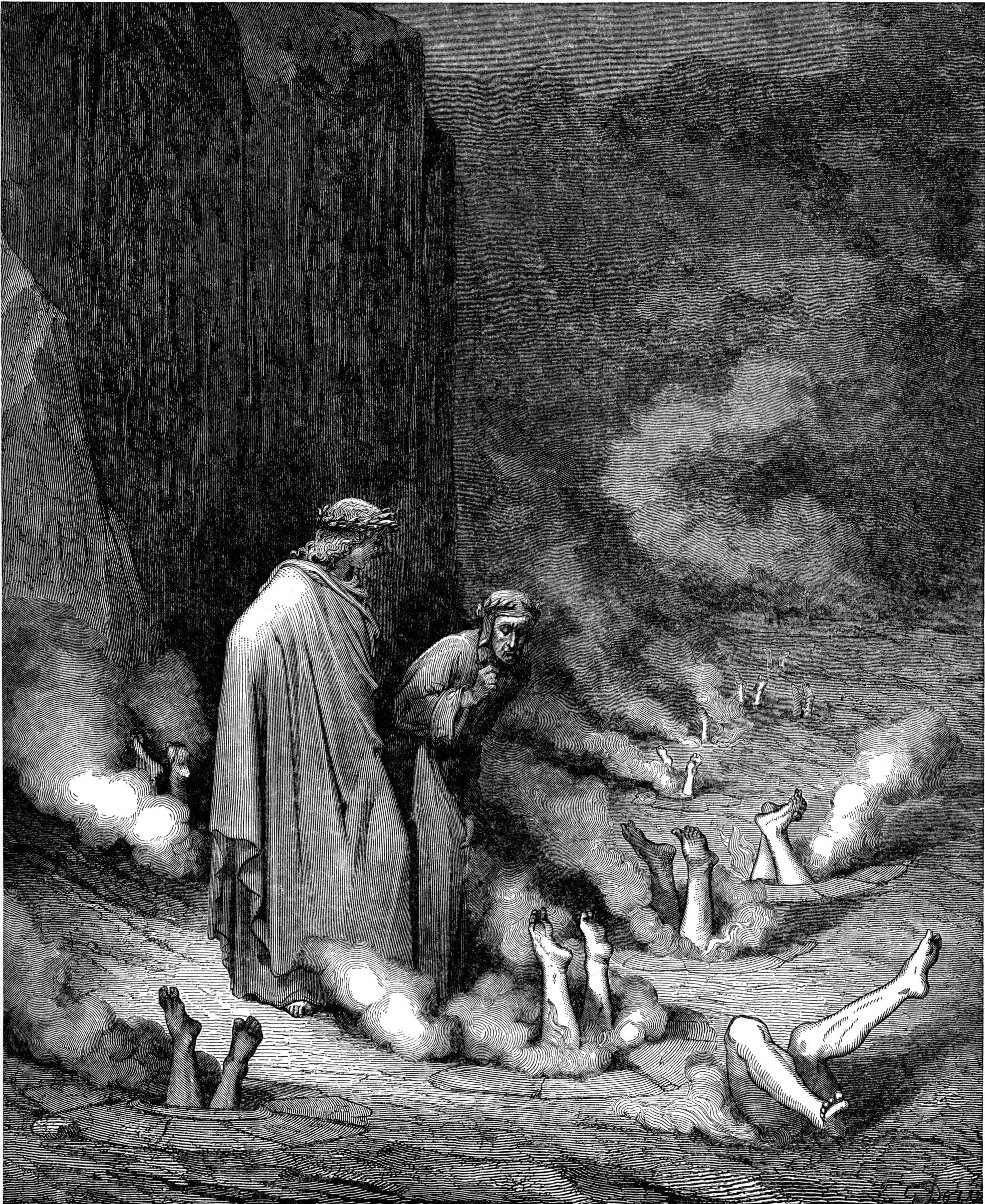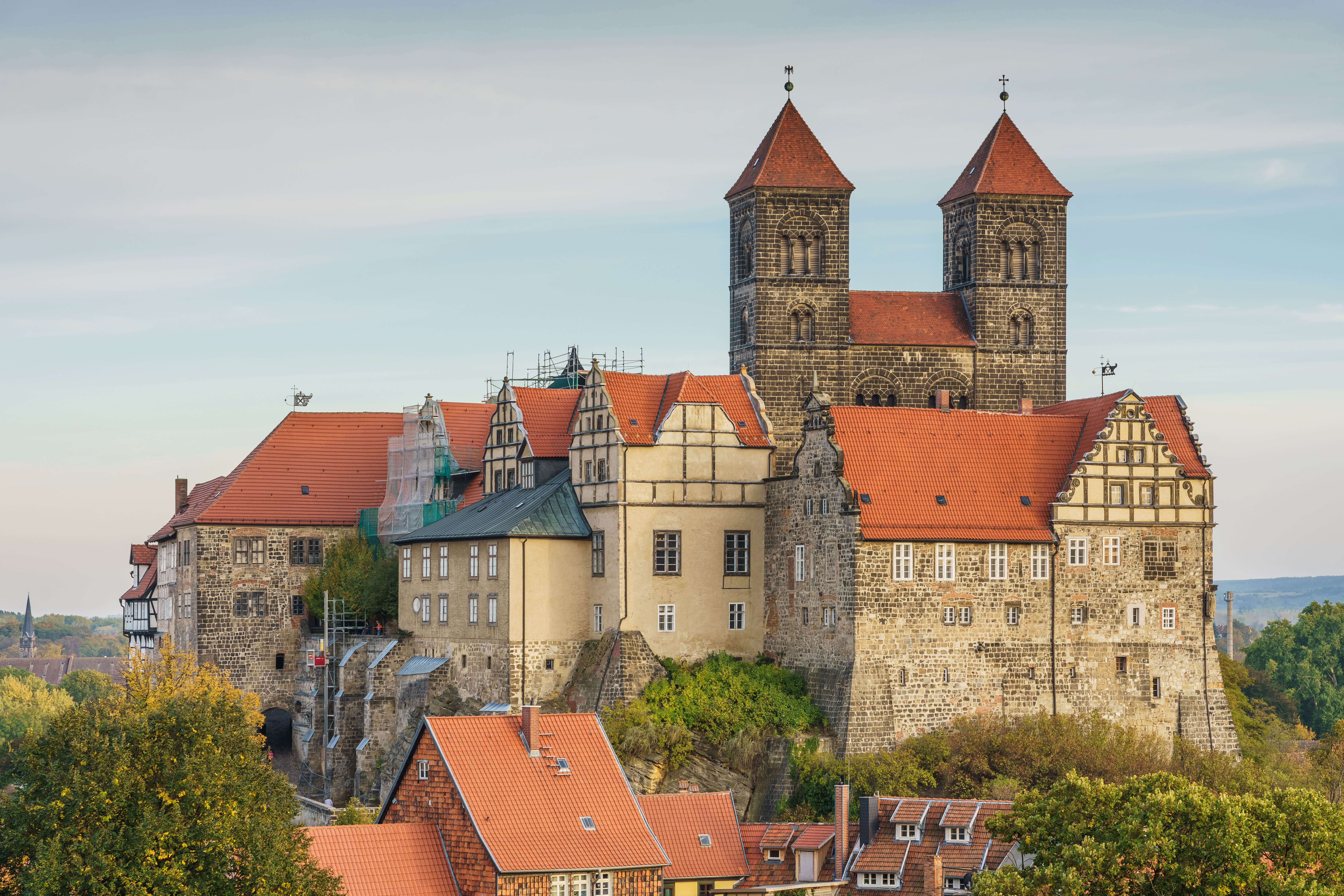|
Wezilo
Wezilo, died 1088, was Archbishop of Mainz from 1084 to 1088. He was a leading supporter of the Holy Roman Emperor Henry IV in the Investiture Controversy, and of antipope Clement III. A priest in Halberstadt, Wezilo owed his promotion to the support of Henry IV. In 1085 he negotiated on behalf of the emperor with the papal legate, the future Pope Urban II, and in the same year he was convicted of simony and excommunicated by the pro-papal Synod of Quedlinburg. In May 1087 the forces of Clement III and "the imperialist prefect Wezilo" forced Pope Victor III to retreat from Rome. Wezilo was buried in Mainz Cathedral Mainz Cathedral or St. Martin's Cathedral ( or, officially, ') is located near the historical center and pedestrianized market square of the city of Mainz, Germany. This 1000-year-old Roman Catholic cathedral is the site of the episcopal see of th .... References {{Authority control Year of birth unknown 1088 deaths Archbishops of Mainz Investiture Co ... [...More Info...] [...Related Items...] OR: [Wikipedia] [Google] [Baidu] |
Archbishop Of Mainz
The Elector of Mainz was one of the seven Prince-electors of the Holy Roman Empire. As both the Archbishop of Mainz and the ruling prince of the Electorate of Mainz, the Elector of Mainz held a powerful position during the Middle Ages. The Archbishop-Elector was president of the electoral college, archchancellor of the empire, and the Primate of Germany as the papal legate north of the Alps, until the dissolution of the empire in 1806. The origin of the title dates back to 747, when the city of Mainz was made the seat of an archbishop, and a succession of able and ambitious prelates made the district under their rule a strong and vigorous state. Among these men were important figures in the history of Germany such as Hatto I, Adalbert of Mainz, Siegfried III, Peter of Aspelt and Albert of Brandenburg. There were several violent contests between rivals for the archbishopric, and their power struggles occasionally moved the citizens of Mainz to revolt. The lands of the elector ... [...More Info...] [...Related Items...] OR: [Wikipedia] [Google] [Baidu] |
Ruthard Of Mainz
Ruthard (died 1109) was Archbishop of Mainz from 1089 to 1109, and a leading opponent of the Emperor Henry IV and his antipope Clement III (Wibert of Ravenna). He spent nearly eight years in exile because of his opposition, and played a part in the successful revolt of Henry V against his father. Archbishop Ruthard was appointed archbishop of Mainz on 25 July 1089, the same day that Herimann was appointed archbishop of Cologne and Erimann archbishop of Würzburg. In March 1094, a general synod of the bishops and princes of the Holy Roman Empire met in Mainz. The emperor Henry IV was in Lombardy at the time. Duke Bretislav of Bohemia had sent to the assembly two bishops-elect, Cosmas of Prague and Andrew of Olmütz, to be presented to Archbishop Ruthard for consecration. After the synod determined that their appointments had been approved by the emperor, it gave permission to Ruthard to proceed. On 12 March 1094, the archbishop consecrated the two bishops. In 1096, Ruthard oppose ... [...More Info...] [...Related Items...] OR: [Wikipedia] [Google] [Baidu] |
Mainz Cathedral
Mainz Cathedral or St. Martin's Cathedral ( or, officially, ') is located near the historical center and pedestrianized market square of the city of Mainz, Germany. This 1000-year-old Roman Catholic cathedral is the site of the episcopal see of the Bishop of Mainz. Mainz Cathedral is predominantly Romanesque architecture, Romanesque in style, but later exterior additions over many centuries have resulted in the appearance of various architectural influences seen today. It comprises three aisles and stands under the patronage of Martin of Tours, Saint Martin of Tours. The eastern Choir (architecture), quire is dedicated to Saint Stephen. The interior of the cathedral houses tombs and funerary monuments of former powerful Prince Elector, Electoral-Prince-Bishop, prince-archbishops, or , of the diocese and contains religious works of art spanning a millennium. The cathedral also has a central courtyard and statues of Saint Boniface and The Madonna on its grounds. During the time of ... [...More Info...] [...Related Items...] OR: [Wikipedia] [Google] [Baidu] |
Archbishops Of Mainz
The Elector of Mainz was one of the seven Prince-electors of the Holy Roman Empire. As both the Archbishop of Mainz and the ruling prince of the Electorate of Mainz, the Elector of Mainz held a powerful position during the Middle Ages. The Archbishop-Elector was president of the electoral college, archchancellor of the empire, and the Primate of Germany as the papal legate north of the Alps, until the dissolution of the empire in 1806. The origin of the title dates back to 747, when the city of Mainz was made the seat of an archbishop, and a succession of able and ambitious prelates made the district under their rule a strong and vigorous state. Among these men were important figures in the history of Germany such as Hatto I, Adalbert of Mainz, Siegfried III, Peter of Aspelt and Albert of Brandenburg. There were several violent contests between rivals for the archbishopric, and their power struggles occasionally moved the citizens of Mainz to revolt. The lands of the elector ... [...More Info...] [...Related Items...] OR: [Wikipedia] [Google] [Baidu] |
Siegfried I (archbishop Of Mainz)
Siegfried I (died 16 February 1084) was the Abbot of Fulda from 25 December 1058 until 6 January 1060, and from January 1060 until his death in February 1084, he was Archbishop of Mainz. Family Siegfried was a member of the Frankish Reginbodonen family of the Rhineland. His father, also called Siegfried, was count of the Königssondergau. Count Siegfried was succeeded by his son Udalric, who was count of the Königssondergau and advocate of the diocesan church of Mainz from 1052 to 1074. Career in the church Siegfried was educated in the monastery of Fulda and became a monk there. On 25 December 1058, he was appointed abbot of Fulda and on 6 January 1060, the Empress Agnes appointed him Archbishop of Mainz. In Spring 1062, he entered the political realm as a member of the faction surrounding Anno II of Cologne, who forcibly took control of the regency of the young king, Henry IV in the Coup of Kaiserswerth. Nevertheless, Siegfried never had the political influence of Anno or ... [...More Info...] [...Related Items...] OR: [Wikipedia] [Google] [Baidu] |
Simony
Simony () is the act of selling church offices and roles or sacred things. It is named after Simon Magus, who is described in the Acts of the Apostles as having offered two disciples of Jesus payment in exchange for their empowering him to impart the power of the Holy Spirit in Christianity, Holy Spirit to anyone on whom he would Laying on of hands, place his hands. The term extends to other forms of trafficking for money in "spiritual things". Origin The earliest church legislation against simony may be that of the forty-eighth canon of the Synod of Elvira (), against the practice of making a donation following a baptism. Following the Edict of Milan (313), the increased power and wealth of the church hierarchy attracted simony. There are several accusations of simony (not by that name) against Arianism, Arians, from Athanasius of Alexandria, Hilary of Poitiers, Pope Liberius and Gregory of Nazianzus. Many Church Fathers, such as Ambrose, spoke out against the selling of mini ... [...More Info...] [...Related Items...] OR: [Wikipedia] [Google] [Baidu] |
1088 Deaths
Year 1088 ( MLXXXVIII) was a leap year starting on Saturday of the Julian calendar. Events By place Europe * Almoravid forces (supported with fighters from local Andalusian provinces), under Sultan Yusuf ibn Tashfin, besiege Aledo, but are forced to retreat, by the arrival of Spanish troops of King Alfonso VI ("the Brave") of Castile. * Catalonian troops, under Count Berenguer Ramon II, reconquer Tarragona (lost again in 1108). He will rule Catalonia with his 6-year-old nephew Ramon Berenguer III, until he comes of age. England * Spring – A rebellion led by William the Conqueror's half-brothers Odo of Bayeux and Robert (2nd Earl of Cornwall), begins against King William II with the aim to remove him from the throne. Odo's revolt in Kent and Sussex is supported by nobles across the country. * The Worcestershire rebellion led by Robert de Lacy (a son of Ilbert de Lacy) is dealt with quickly by Wulfstan, bishop of Worcester, who calls on th ... [...More Info...] [...Related Items...] OR: [Wikipedia] [Google] [Baidu] |
Year Of Birth Unknown
A year is a unit of time based on how long it takes the Earth to orbit the Sun. In scientific use, the tropical year (approximately 365 solar days, 5 hours, 48 minutes, 45 seconds) and the sidereal year (about 20 minutes longer) are more exact. The modern calendar year, as reckoned according to the Gregorian calendar, approximates the tropical year by using a system of leap years. The term 'year' is also used to indicate other periods of roughly similar duration, such as the lunar year (a roughly 354-day cycle of twelve of the Moon's phasessee lunar calendar), as well as periods loosely associated with the calendar or astronomical year, such as the seasonal year, the fiscal year, the academic year, etc. Due to the Earth's axial tilt, the course of a year sees the passing of the seasons, marked by changes in weather, the hours of daylight, and, consequently, vegetation and soil fertility. In temperate and subpolar regions around the planet, four seasons ar ... [...More Info...] [...Related Items...] OR: [Wikipedia] [Google] [Baidu] |
Pope Victor III
Pope Victor III ( 1026 – 16 September 1087), born Dauferio Epifani Del Zotto, was the head of the Catholic Church and ruler of the Papal States from 24 May 1086 to his death. He was the successor of Pope Gregory VII, yet his pontificate is far less notable than his time as Desiderio da Montecassino, the great abbot of Monte Cassino. He is the most recent lawfully elected pope to have taken the pontifical name "Victor".Two antipopes, Gregorio dei Conti in 1138 and Octavianus from 1159 to 1164, both took the style Victor IV but neither has ever been recognised as a lawful pope. His failing health was the factor that made him so reluctant to accept his pontifical election and his health was so poor that he fell to illness during his coronation. The only literary work of his that remains is his ''Dialogues'' on the miracles performed by Benedict of Nursia and other saints at Monte Cassino. Family Daufer was born in 1026. The ''Catholic Encyclopedia'' states his father died ... [...More Info...] [...Related Items...] OR: [Wikipedia] [Google] [Baidu] |
Quedlinburg
Quedlinburg () is a town situated just north of the Harz mountains, in the Harz (district), district of Harz in the west of Saxony-Anhalt, Germany. As an influential and prosperous trading centre during the early Middle Ages, Quedlinburg became a center of influence under the Ottonian dynasty in the 10th and 11th centuries. The castle, church and old town with around 2,100 Timber framing, timber houses, dating from this time of influence, were added to the UNESCO World Heritage Site, World Heritage List in 1994 because of their exceptional preservation and outstanding Romanesque architecture. Quedlinburg has a population of more than 24,000. The town was the capital of the Quedlinburg (district), district of Quedlinburg until 2007, when the district was dissolved. Several locations in the town are designated stops along a scenic holiday route, the Romanesque Road. History The town of Quedlinburg is known to have existed since at least the early 9th century, when there was a ... [...More Info...] [...Related Items...] OR: [Wikipedia] [Google] [Baidu] |
Papal Legate
300px, A woodcut showing Henry II of England greeting the Pope's legate. A papal legate or apostolic legate (from the ancient Roman title '' legatus'') is a personal representative of the Pope to foreign nations, to some other part of the Catholic Church, or to representatives of a state or monarchy. A legate is empowered in matters of Catholic faith and for the settlement of ecclesiastical matters. The legate is appointed directly by the Pope—the Bishop of Rome and head of the Catholic Church. Hence a legate is usually sent to a government, to a sovereign, to a large body of believers (such as a national church), or to take charge of a major religious effort, such as an ecumenical council, a crusade to the Holy Land, or even against a heresy such as the Cathars. The term ''legation'' is applied both to a legate's mandate and to the territory concerned (such as a state, or an ecclesiastical province). The relevant adjective is ''legatine''. History 200px, Cardinal Th ... [...More Info...] [...Related Items...] OR: [Wikipedia] [Google] [Baidu] |
Pope Urban II
Pope Urban II (; – 29 July 1099), otherwise known as Odo of Châtillon or Otho de Lagery, was the head of the Catholic Church and ruler of the Papal States from 12 March 1088 to his death. He is best known for convening the Council of Clermont, which ignited the series of Christianity and violence, Christian military expeditions known as the Crusades. Pope Urban was a native of France and a descendant of a noble family from the French commune of Châtillon-sur-Marne. Before his papacy, Urban was the grand prior of Cluny Abbey, Cluny and bishop of Ostia. As pope, he dealt with Antipope Clement III, the infighting of various Christian nations, and the Byzantine–Seljuk wars, Turkish invasions into Anatolia. In 1095, he started preaching for the start of the First Crusade (1096–1099). He promised forgiveness and pardon for all of the past sins of those who would fight to reclaim the Holy Land from Muslims and free the Eastern churches. This pardon would also apply to those fig ... [...More Info...] [...Related Items...] OR: [Wikipedia] [Google] [Baidu] |





